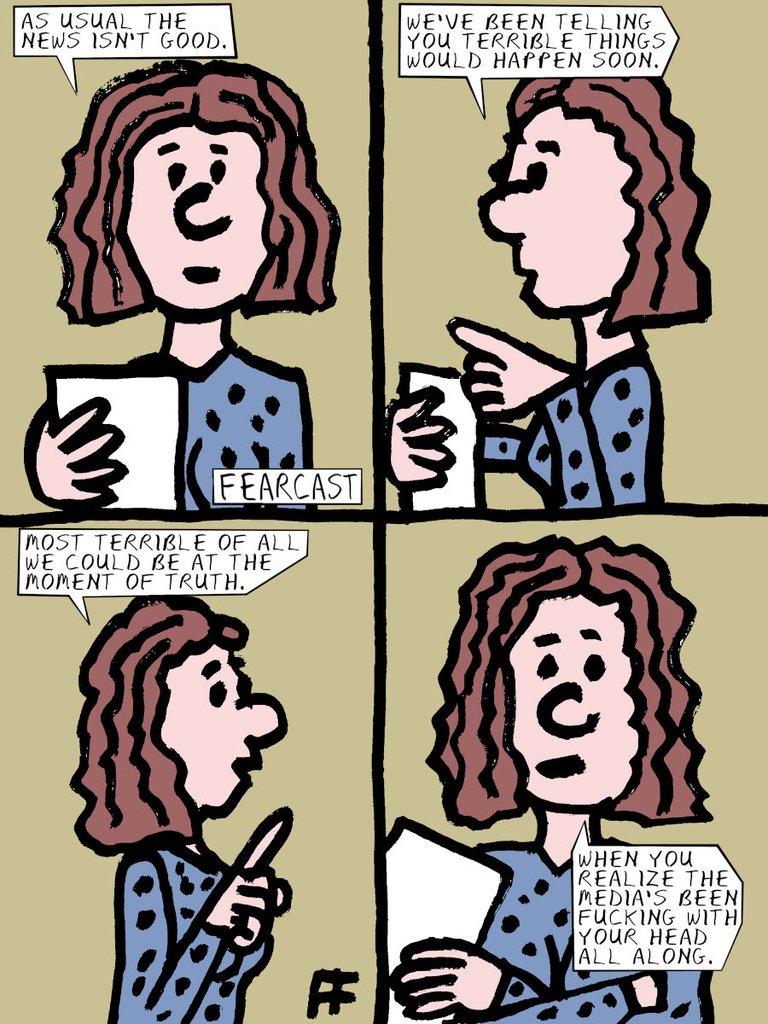
This Is Exactly What Mind Control Looks Like
https://old.bitchute.com/video/sf7wu0PH8d6W/
https://old.bitchute.com/video/jlVLJ7KN3mhz/
Why Mainstream Media Consists of Same Talking Points
Mainstream news media often appears to read from the same talking points due to several factors. One reason is the ownership structure of media outlets, which are frequently controlled by a few large corporations, leading to a homogenization of content.
Additionally, media conglomerates like Sinclair Broadcast Group have been known to instruct their affiliates to broadcast identical scripts, as evidenced by a 2018 incident where local news anchors across the United States read the exact same warning about "fake news".
Another factor is the influence of government insiders and agencies, who can provide journalists with pre-packaged stories and information, reducing the diversity of narratives.
Furthermore, the educational background of many journalists tends to be similar, often coming from the same elite institutions, which can lead to a uniformity in their perspectives and the stories they choose to cover.
Lastly, the media's role in shaping public discourse can lead to a self-reinforcing cycle where certain viewpoints dominate, making it seem as though all news outlets are echoing the same message.
The perception that mainstream media reading from the same talking points is a form of brainwashing or mind control is a viewpoint that has gained traction in various circles. However, it's important to consider this from a nuanced perspective.
Reasons for Similarity in Media Coverage:
Economic Pressures: Media outlets often prioritize stories that attract the largest audience, which can lead to a focus on similar topics and angles.
Information Sources: Journalists often rely on the same primary sources, such as government officials, experts, and press releases, which can result in similar reporting.
News Cycles: Breaking news and major events often require immediate coverage, leading to simultaneous reporting across multiple outlets.
Editorial Policies: News organizations may have similar editorial policies and standards, leading to a uniformity in how stories are presented.
Ownership and Influence: As mentioned earlier, media consolidation can lead to a homogenization of content.
Concerns About Media Influence:
Echo Chambers: The internet and social media have created echo chambers where people are more likely to consume information that aligns with their existing beliefs, reinforcing certain narratives.
Agenda Setting: Media outlets can influence what the public perceives as important, which can shape public opinion and discourse.
Bias and Propaganda: There is a legitimate concern that media can be used to propagate specific agendas, either through overt propaganda or more subtle means.
Critical Thinking and Media Literacy:
While it's important to be aware of these dynamics, it's also crucial to foster critical thinking and media literacy. Here are some steps you can take:
Diversify Your Sources: Consume news from a variety of sources, including international and independent media.
Fact-Check Information: Verify information through multiple reliable sources before accepting it as true.
Analyze Perspectives: Consider different viewpoints and the potential biases of each source.
Engage Critically: Question the narratives presented and seek out additional context and background information.
By being informed and critical consumers of media, you can better navigate the information landscape and form your own well-rounded opinions.